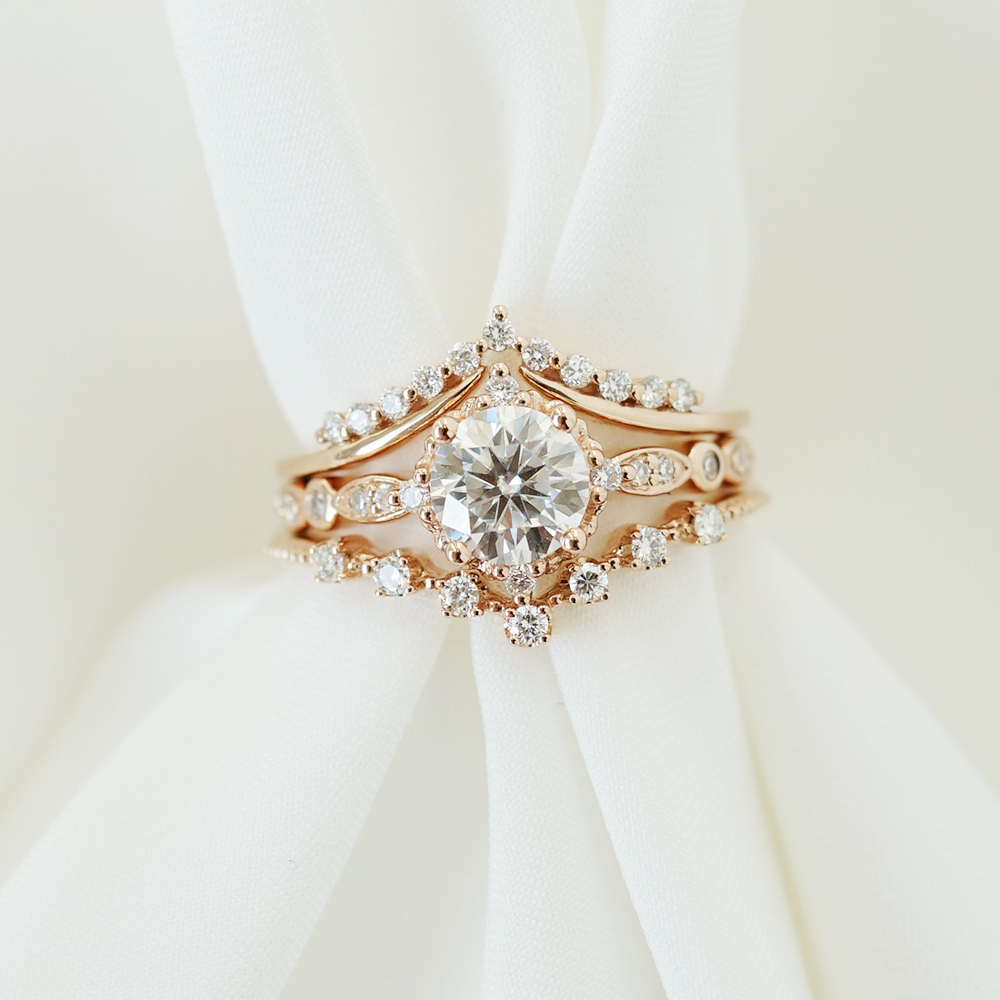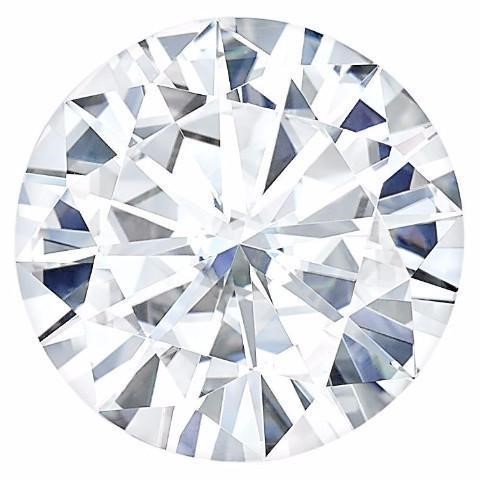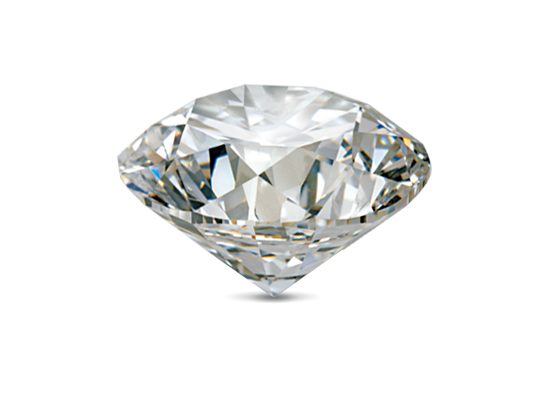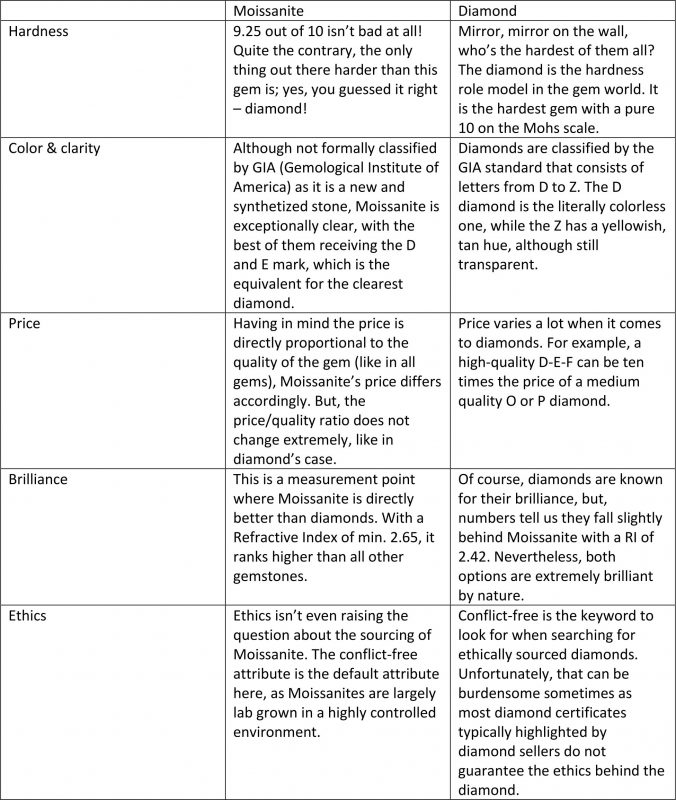Articles
Know the difference: Moissanite VS Diamond
When it comes to rings, weddings and engagements, it was always mistaken that only the biggest investment is going to make the most impact. That is where diamonds come in – and the investment part doesn’t just refer to a hefty price tag. Since they are so rare, their quality is often disputed on the market; what’s more, nowadays diamonds raise up the ethics question too.
As the solution, let’s introduce Moissanite, a relatively new (it was founded in the end of the 19th century) gem that is naturally occurring, but more frequently lab synthetized. So, we will cut to the chase of this gem duel and present the facts in the following table.
Know the difference:
Make your choice!
Picking the ring and gemstone for your engagement, vow renewal and wedding can be a tough task for some. But, the truth is – it is always a highly personal task to do, as every woman differs in terms of personal style and preference.
When it comes to diamonds and Moissanite, it is also up to you to sum up the pros and cons of each one; that is, if you definitely opt for a classic sparkly gem that is the epitome description of both the Moissanite and the diamond. It all starts with the things that matter the most for you. For example, if top-notch hardness is something essential to you, your choice would probably be the diamond.
However, we doubt that any lady puts that much stake on a physical property that is vital mainly for the industrial purpose of diamonds.
When it comes to durability, there is no doubt that these two are topping with their rank above all other gemstones (sapphire, ruby, emerald). Having that in mind, it wouldn’t be financially effective to forgo Moissanites for the sake of diamonds, as their price difference is exorbitant. It is more than encouraging to opt for Moissanite when it offers pretty much the same, sparkly things like the diamond. To add up, it is even more brilliant than its more expensive friend, having more luminosity that is definitely making it one-of-a-kind.
If the background ethics of a gem is highly concerning for you, go for Moissanite, as it doesn’t even spark a doubt about the potential sourcing, labor and society problems. This gem is completely flawless when it comes to ethics.
Even if all mentioned “virtues “of a good quality Moissanite still don’t ring a bell for you and you constantly dream about a beautiful diamond ring that will take the spotlight on your hands, taking compliments like: “Wow, your diamond looks magnificent!” etc., fear no more. If you non-compromisingly want that diamond effect on your hands with a somewhat limited budget (which is totally OK and understandable), rest assured that people won’t make a difference if you opt for a high quality Moissanite instead of a diamond. Of course, we are not saying they are a 100% identical – all we are saying is that unless someone is a gem connoisseur or works with gems professionally, no difference between the gems will be stated.
What to look for in a great Moissanite?
Only high quality Moissanites top the list of the most beautiful, most durable and most stylish gems out there, so be careful to look for the following:
– Cut – Exceptionally cut Moissanites express their brilliance the most. Do not let a badly cut Moissanite ruin its strongest property!
– D-E color – Following the diamond official color classification, D/E classified Moissanites are the clearest of them all, being totally transparent without any additional hues.
– Do not forget to take care after your precious Moissanite! Although extremely durable, you probably wouldn’t like to do hard physical work and chores while wearing your ring. Although it doesn’t pick up dust as fast as the other stones, it is advised to wash it every once in a while in a bowl filled with water with a few drops of sulfate-free cleanser. Or if you prefer, you can have it professionally cleaned.
These clear gemstones are extremely similar in design, cut and color – adding the lower price of Moissanite in the combo means that it is a great dupe for diamonds!





